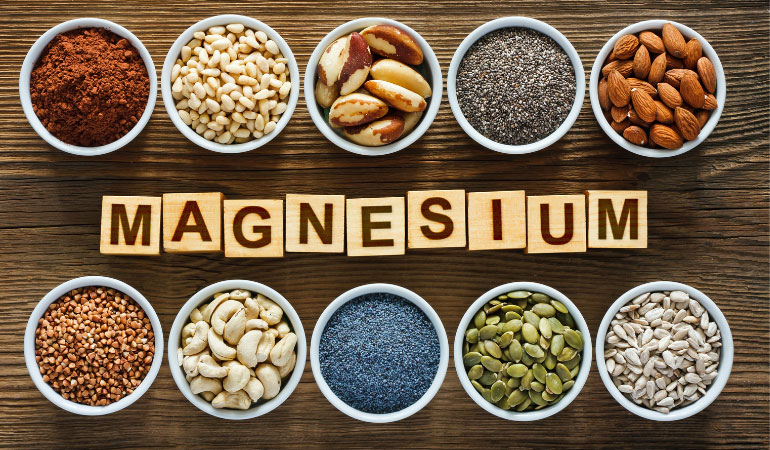Magnesium and its types
Magnesium is a mineral that must be taken in order for the human body to maintain its health. The intracellular space is also the second most important mineral after potassium. Our bodies contain approximately 25 g of it. Of this, 60% is found in the bones, 39% in the intracellular space, and 1% in the extracellular space. Since the body cannot produce this mineral, magnesium must be taken through food. It is also found in soil and seawater.
It is very important to use the right types of magnesium in terms of bioefficiency. Our bodies require 400 mg of magnesium per day. The most natural intake of magnesium is through regular nutrition.
Magnesium comes in several forms;
Magnesium citrate, magnesium oxide, magnesium sulfate, magnesium chloride, magnesium taurate, magnesium lactate, magnesium malate, magnesium l-threonate, glycinate magnesium, and magnesium orotate.
Which type of magnesium is suitable for what?
Magnesium Citrate
The most commonly used is magnesium citrate. It is easy to absorb. Prevents constipation. It meets the mineral needs of our body.
Magnesium Oxide
It is used to treat hyperacidity, dyspepsia, and reflux. It also helps in relieving constipation. Those with kidney disorders should not use it without consulting a doctor.
Magnesium Sulfate
It is used against indigestion. It has an antibacterial effect. It is an inorganic salt. That is, it is a chemical compound. It appears as MgSO4. It is also used as a beauty product, due to its skin-firming and moisturizing properties.
Magnesium Chloride
It is an inorganic salt with the chemical formula of MgCl2. Apart from it’s role in many cellular functions in our body, it also serves as a cofactor in enzymatic reactions. It is necessary for cardiovascular and blood activity.
Magnesium Taurate
It is the most ideal type of magnesium that can be used in those with heart disease. Both magnesium and the amino acid taurate have the property of improving heart function. Both reduce blood pressure. It improves the contraction of the heart muscle.
Magnesium Lactate
It is the magnesium salt of lactic acid. It is a natural mineral that helps to maintain the functions of the cardiovascular system, nervous system, and digestive system. At the same time, it also helps blood movement and glucose utilization. By maintaining cell efficiency, it helps to maintain the growth and proliferation of normal cells, normal nerve functions, and normal metabolic processes.
Magnesium Malate
It is a dietary supplement that combines magnesium and malic acid. Malic acid is also found in many fruits. It is the type of magnesium whose absorption and bioavailability are the highest. It also used in migraines, chronic pain, and depression as adjuvants.
Magnesium L-Threonate
Water, obtained from the metabolic breakdown of magnesium and vitamin C, is also soluble; it is the salt formed by mixing threonic acid, a substance. It is usually used as an aid to the functions of brain cells in the prevention of disorders such as depression, and memory loss.
Magnesium Glycinate
This is also one of the magnesium salts with the highest absorption. It aids in the reduction of blood pressure and insulin resistance during the breakdown of sugar.
Magnesium Orotate
It is the magnesium salt of orotic acid. It is very useful as a mineral supplement. It is used in the treatment of extracellular magnesium deficiency. It plays a role in reducing magnesium depletion, which inhibits ATP binding. It does this through orotic acid.


